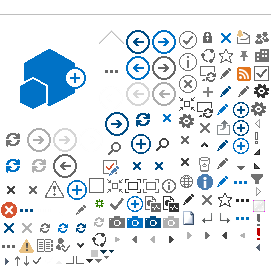Every commercial client is impacted by environmental exposures, which means independent agents are in prime position to help them navigate the complicated environmental insurance market.
The past few years have brought a notable shift in consumer awareness around the role that companies play in impacting their health and the environment around them. This shift toward sustainability, conscious consumption and ethical practices has led to increased pressure on industries meet those expectations.
This change has led to significant growth in the environmental liability market since its development in the early 1980s.
“One of the most fundamental contributions is environmental liability insurance's ability to integrate the cost of environmental risk directly into a premium based on the company's operations," says Kari Dybdahl Kohal, president, American Risk Management Resources Network LLC (ARMR). “By doing this, environmental insurance enables organizations to not only proactively safeguard their assets against both known and unknown environmental liabilities, but also to do so within the framework of a financial portfolio, where risks are managed systematically."
“This has become especially critical as we face an era of unprecedented climate instability, which poses significant challenges and economic impacts across industries and, consequently, on the insurance sector itself," Kohal explains.
To assist companies in lessening the potential for claims, independent agents are in a position to offer environmental insurance policies that help meet their client's needs. However, due to the complexities of the industry, only “a small percentage of retail agents are actively working in the environmental space—and yet every commercial insured they work with is impacted by environmental exposures," says Chris Bunbury, president, Environmental Risk Managers Inc. (ERMI).
To alleviate this gap, here are three tips for agents looking to navigate the environmental market and assist clients in meeting their sustainability goals:
1) Education is essential for insured and agent alike. “The key to success in the environmental market space is education for both the agent and the insured," Bunbury says. “An environmentally educated insured can make an informed decision if investing in pollution insurance will add value to their business model."
Further, the number and complexities of the environmental policy forms make it difficult for insurance agents “to place the coverage on their own through direct access with carriers, as the coverage they obtain from one carrier could be completely different than what a wholesale broker would obtain," Kohal says. “They could very well sell an environmental insurance policy that has gaps and exclusions that apply to their client without knowing it."
However, there is assistance available for agents to understand the hundreds of coverages available. “Any carrier would be happy to give agents an education," says Jayne Cunningham, focus group leader, environmental, Beazley. “Any carrier that writes environmental impairment liability would be happy to sit down and spend a day or two educating agents on how it works and how their form works, as well as helping them develop a practice."
2) Communicate with insureds about their exposure. “Starting the conversation about pollution exposures is key … most insureds don't believe they have a pollution exposure but every business has," says Beth Linton, vice president, environmental brokerage, EUS, a division of Burns & Wilcox. “For example, a property owner may not think they have a true pollution exposure, yet widespread mold can cause multiple problems for tenants and the property owner."
Agents should explain the exclusions that apply under a general liability policy, which positions them as an expert and builds credibility.
“Just sharing with their clients that their general liability and commercial property policies have pollution exclusions and that they now have a way to fill that coverage gap is enough to add value to their relationship with their client and will support them as a risk advisor," Kohal says. “If they want to strengthen that value even more, teaming up with a reputable environmental insurance wholesale broker will do that for them."
3) Emphasize the role of environmental liability insurance in meeting sustainability regulations. “Even if a company does not have a sustainability strategy in place, when they invest in pollution insurance they have an environmental financial assurance instrument that can protect them, along with impacted third parties and the environment, for exposure to cleanup costs, natural resource damages, third-party bodily injury and property damage, transportation pollution liability, non-owned disposal site coverage, emergency response costs, reputational risk, defense costs, and business income," Bunbury says.
In assisting clients with meeting changing sustainability regulations, agents should ensure clients know that “environmental insurance provides a financial backstop to potentially catastrophic events and associated environmental events and conditions emanating or arising from specific sites or operations including transit and waste disposal sites," Linton adds. “This backstop mitigates the uncertainty of environmental liabilities."
Olivia Overman is IA content editor.
